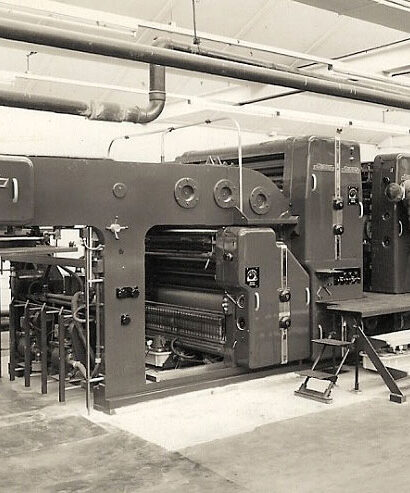In the beginning, was word, then it was printed and had dwelt among us ever since!
The printed word has been around since the invention of the printing press in 1440. From then until today, the printed word has been used to bring information and ideas to people around the world. It’s a powerful tool to spread knowledge and understanding, and it still remains an important part of our lives.
While some argue that we are progressing towards a paperless society, the reality is far from it. Sure, it is true that billing and invoices are often handled electronically these days, but there is still a lot of printed media in our daily lives.
From signage and posters to advertising, print is everywhere – even at sports events such as the World Cup. For instance, without it, spectators wouldn’t know where to sit or how to get there, or even cannot identify the players. As digital innovation continues to evolve, it is easy to overlook the fact that print is still a huge part of our lives
Yesterday
Printing has been around for over 600 years, but it was only in the 15th century that Johannes Gutenberg invented the movable type press. This invention revolutionized the printing industry and made it possible to produce books and newspapers in mass quantities. Over the next few centuries, printing evolved and printing presses became more advanced and efficient. In the 19th century, the invention of lithography made it possible to print high-quality images, and by the 20th century, offset printing had become the industry standard.

Earlier, the printed word was a primary source of news, education, and entertainment. Books, newspapers, magazines, and pamphlets were how people obtained information. Before television and the internet, printed materials were the only way to learn and stay up to date on the world. It was also the only way to engage with literature, philosophy, and art.
Today
With the advent of digital technology, printing has undergone yet another transformation. Today, digital printing has become the norm for many printing applications, including books, newspapers, packaging, and promotional materials. Digital printing is fast, versatile, and cost-effective, making it possible for companies to produce high-quality printed materials quickly and efficiently. In addition, print on demand services have made it possible for individuals and businesses to print only the quantities they need, reducing waste and saving money.
Another factor contributing to the relevance of print media is that it remains an essential tool for advertising as print advertising is still an effective way to reach certain audiences.

The printed word is still an important source of information and entertainment. Books still remain the primary source of literature and non-fiction, with millions of books published each year. Newspapers and magazines are still relevant, with many people turning to them for more in-depth information and analysis than what is offered on the internet. Plus, printed materials offer a more tactile and immersive experience than digital versions.
Tomorrow
As technology continues to advance, it is likely that the printing industry will continue to evolve and change. Some experts predict that 3D printing will play an increasingly important role in the industry, allowing for the creation of complex and intricate products that were once difficult or impossible to produce using traditional printing methods.

Additionally, it is expected that the use of eco-friendly materials and processes will become more widespread, as consumers and businesses alike become increasingly concerned about the impact of printing on the environment.
The printed word may look a bit different than it does today. The e-books and digital magazines along with new innovations will provide readers with more choices than ever before. While printed materials may not be as widely used as they once were, they will continue to be an important part of our lives.
For one, printed materials typically last longer than digital forms, making them great for passing down from one generation to the next. This gives them a timeless quality. Additionally, printed materials provide us with a physical link to the past, enabling us to comprehend and explore our heritage in a more personal manner.
As our world continues to evolve, it’s important to recognize and appreciate the value of the printed word as it offers a tactile and personal experience that digital media cannot replicate, and it remains an essential tool for advertising. As the industry evolves, we can expect to see new and innovative ways in which print and digital media will coexist and complement each other. In the end, it’s clear that the future of print media in the digital age is bright, as long as it continues to adapt and evolve to meet the changing demands of the market.
Machine Dalal platform is preferred by buyers and sellers from the global print industry to get directly connected with each other and trade their machinery.
Visit the Machine Dalal website or simply download our app onto your Android or iOS smartphone.




